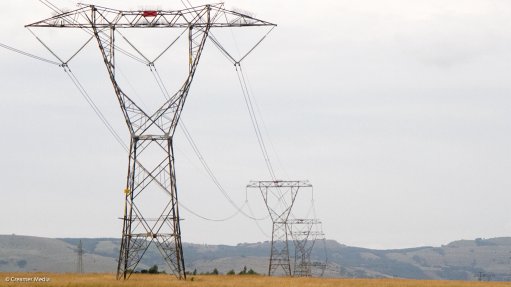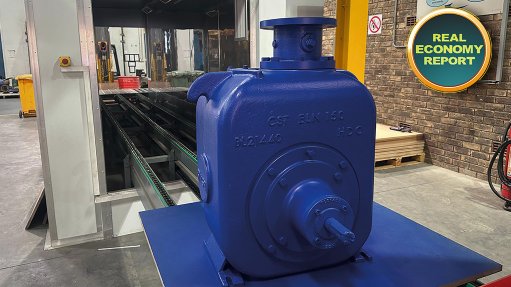Compliance to plan is a hallmark of high-performing mines
Across the mining industry, mine planning is often discussed in terms of maximising net present value over the life-of-mine. But the best-designed plans mean little if they cannot be delivered. What distinguishes high-performing operations is not just their ability to create mine plans, but their discipline in executing them.
Research supports this. Otto and Musingwini (2019) demonstrate that the value a mine ultimately delivers depends not only on the quality of the schedule, but on how closely the mine adheres to it in practice. Their case study of the Sishen iron-ore mine showed how implementing a spatial compliance approach improved plan adherence from 69% to 94% in three years. That improvement was tied directly to better alignment across planning horizons, improved resource utilisation, and greater confidence in long-term delivery.
This relationship between compliance and performance is echoed in Hall and Hall's (2015) work published in the resources sector’s professional body AusIMM Bulletin. According to their findings, the most effective operations deliver against the tactical mine plan without compromising their ability to meet future key performance indicators (KPIs). When mines stray from the plan, whether owing to short-term productivity pressures or a lack of spatial visibility, the long-term impact is often a reduction in value, degraded sequence integrity, and missed targets.
For senior leaders, the message is clear: compliance to plan is a proxy for performance. When measured consistently and acted upon, it becomes a lever for accountability, alignment and long-term success.
When Small Deviations Threaten the Bigger Picture
The following example comes from a Tier 1 operation that was facing this exact challenge. The site had all the characteristics of a mature planning environment, including a five-year strategy supported by robust tactical, rolling weekly and daily planning cycles. Despite this rigorous process, production was slipping away from target. Updates to the block model, shifting priorities, and equipment constraints meant planners and operators constantly made small changes that impacted the schedule.
Compounding the issue was the way compliance was tracked. Plan-to-actual checks were done manually, usually once a month, and typically by a single overworked engineer. The process was slow, lacked spatial context, and came too late to address the deviations proactively. We[Ad1] introduced Spatial Conformetrics to help the team quantify the gaps and manage this issue. The software enables mining teams to measure how closely actual mined surfaces align with what is planned in the schedule. This is done spatially using surveyed surfaces and interactive 3D visualisation.
With weekly visual comparisons between the schedule and surveyed surfaces, the team could clearly see where and why they were deviating from plan. In one case, they had planned 150-million tonnes of production but only mined 86% of this target. This shortfall looked manageable on paper, but spatially, it showed they were mining areas of the pit that had not been prioritised in the plan. These deviations had immediate downstream consequences for the site's mobile equipment and minerals processing plant.
Turning Data into Direction
With Spatial Conformetrics delivering auditable insights, the team became more confident in their ability to act. Instead of chasing explanations weeks later, they could detect problems early and make adjustments.
The site was already using Micromine’s Alastri Tactical Scheduler (ATS) to manage its medium- to long-term schedules and Alastri Production Scheduler (APS) to support short-term planning. What made a difference was how they began using those longer-term schedules as guidance for shorter-term planning horizons. This created alignment between weekly execution and strategic intent, allowing engineers to make decisions with a clearer view of long-range priorities.
They also introduced a rolling KPI for spatial compliance. Initially, the site’s compliance score was just 43%. But once it became a live, shared metric, it was visible and actionable every week. Performance started to climb, and planners were no longer just responsible for delivering schedules. They were responsible for delivering plans that complemented the organisation's long-term vision.
How Visibility Enables Proactive Management
What started as a software implementation turned into a mindset shift. Weekly check-ins became opportunities for proactive decision-making. Managers could ask better questions, such as “What can be done to prioritise this area?” rather than “Why are we behind, and what can we do to catch up?”
The result was a more confident, more accountable planning process. With ATS, APS and Spatial Conformetrics working together, the team built more realistic schedules and had the tools and processes to keep things on track. Longer-term plans became more achievable. Compliance improved and, most importantly, the gap between plan and execution began to close.
This reflects what Otto and Musingwini (2019) identified in their study of spatial mine-to-plan compliance: that consistent visibility into execution helps operations track progress and actively manage it. By converting compliance into a shared KPI across planning horizons, leadership can more easily identify root causes of deviation and intervene early.
Planning is not just about forecasting tonnes—it is about building confidence across the organisation. With the right tools and timely insights, planning becomes a shared commitment, not just a set of instructions. That shared understanding is what ultimately drives better results.
Invitation
Micromine is hosting an expert-led workshop that examines plan compliance and how high-performing mines use advanced planning software to close the gap between intent and execution.
Register to learn how to:
- Monitor plan conformance using spatial insights
- Track compliance across multiple planning horizons
- Improve accountability and operational decision-making
Interact with real data. By attending, you will be offered:
- Gain a complementary license of Alastri Spatial Conformetrics
- A free data set to explore the capability
- Time with a technical specialist to support your journey
Register here: https://zoom.us/webinar/register/9817636103091/WN_6DNE5WCLSSCWqmw1pq-8OA
References
Hall, A. & Hall, B. (2015). The Role of Mine Planning in High Performance. AusIMM Bulletin, August 2015, pp. 68–71.
Otto, T.J. & Musingwini, C. (2019). A Spatial Mine-to-Plan Compliance Approach to Improve Alignment of Short- and Long-Term Mine Planning at Open Pit Mines. Journal of the Southern African Institute of Mining and Metallurgy, 119(3), pp. 253–259. https://doi.org/10.17159/2411-9717/2019/v119n3a4
Article Enquiry
Email Article
Save Article
Feedback
To advertise email advertising@creamermedia.co.za or click here
Comments
Press Office
Announcements
What's On
Subscribe to improve your user experience...
Option 1 (equivalent of R125 a month):
Receive a weekly copy of Creamer Media's Engineering News & Mining Weekly magazine
(print copy for those in South Africa and e-magazine for those outside of South Africa)
Receive daily email newsletters
Access to full search results
Access archive of magazine back copies
Access to Projects in Progress
Access to ONE Research Report of your choice in PDF format
Option 2 (equivalent of R375 a month):
All benefits from Option 1
PLUS
Access to Creamer Media's Research Channel Africa for ALL Research Reports, in PDF format, on various industrial and mining sectors
including Electricity; Water; Energy Transition; Hydrogen; Roads, Rail and Ports; Coal; Gold; Platinum; Battery Metals; etc.
Already a subscriber?
Forgotten your password?
Receive weekly copy of Creamer Media's Engineering News & Mining Weekly magazine (print copy for those in South Africa and e-magazine for those outside of South Africa)
➕
Recieve daily email newsletters
➕
Access to full search results
➕
Access archive of magazine back copies
➕
Access to Projects in Progress
➕
Access to ONE Research Report of your choice in PDF format
RESEARCH CHANNEL AFRICA
R4500 (equivalent of R375 a month)
SUBSCRIBEAll benefits from Option 1
➕
Access to Creamer Media's Research Channel Africa for ALL Research Reports on various industrial and mining sectors, in PDF format, including on:
Electricity
➕
Water
➕
Energy Transition
➕
Hydrogen
➕
Roads, Rail and Ports
➕
Coal
➕
Gold
➕
Platinum
➕
Battery Metals
➕
etc.
Receive all benefits from Option 1 or Option 2 delivered to numerous people at your company
➕
Multiple User names and Passwords for simultaneous log-ins
➕
Intranet integration access to all in your organisation





















